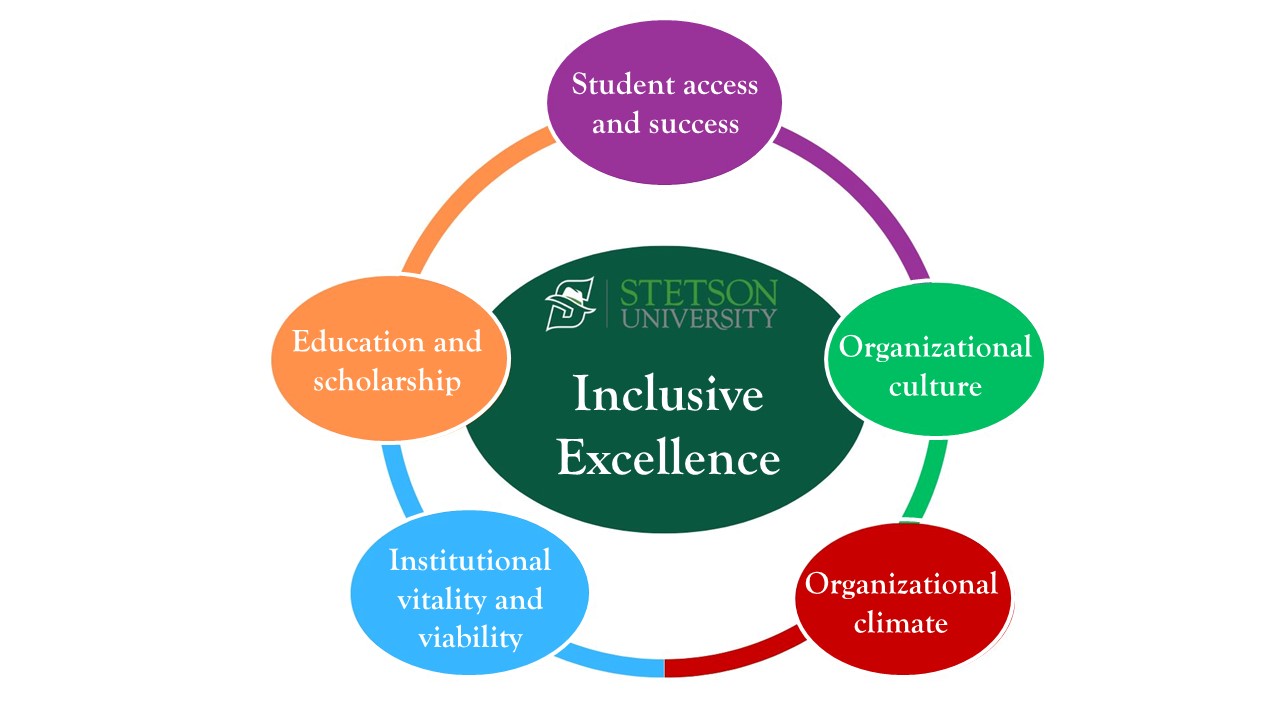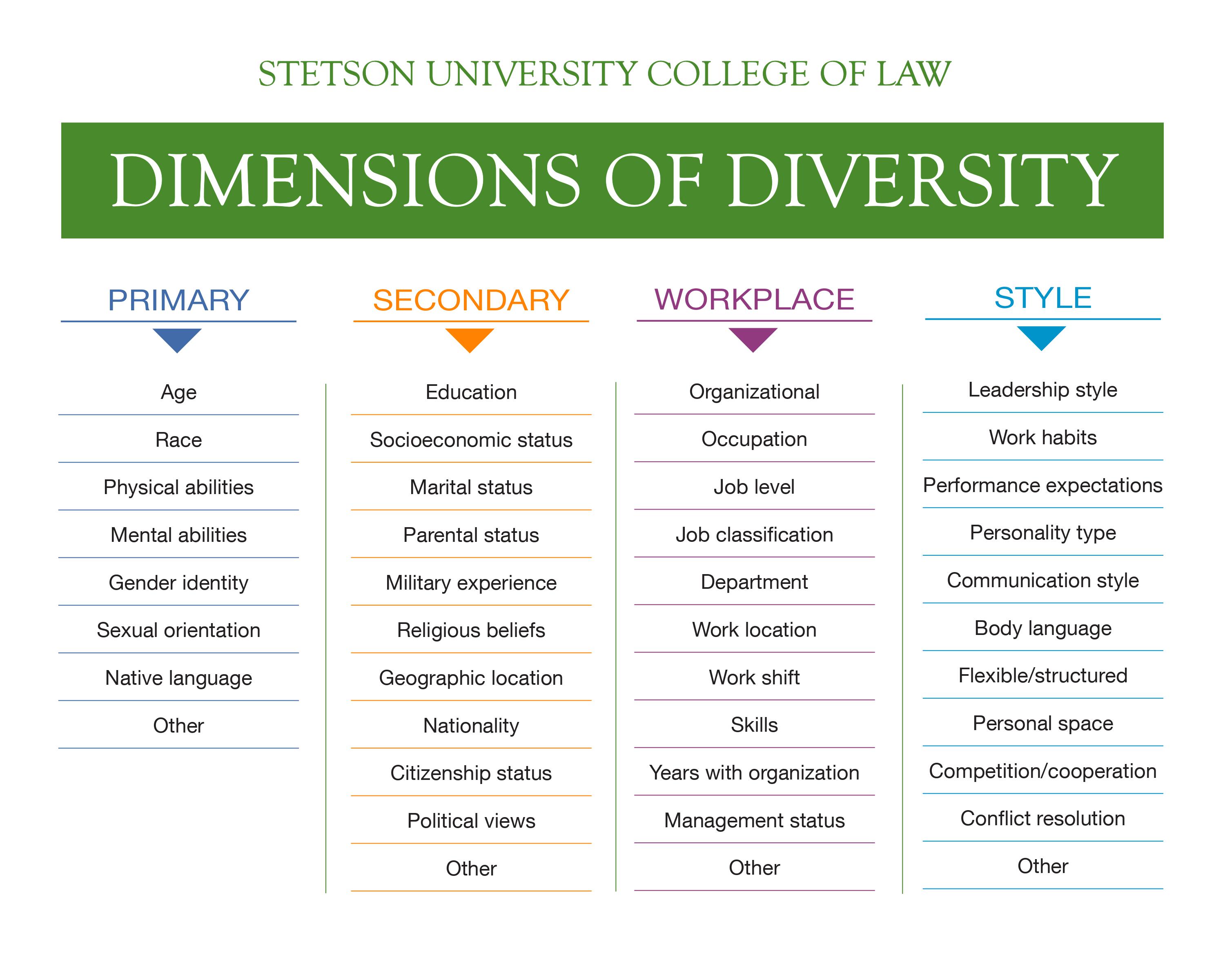What is Inclusive Excellence?
Inclusive Excellence is an established framework to promote deliberate strategies and best practices to ensure that the tapestry of identities, experiences, knowledge, and perspectives across an institution:
- Have voice and inclusion throughout the structures of the institution, and
- Are all prioritized to further enhance the institution's mission and outcomes.
The Inclusive Excellence framework is designed to help colleges and universities integrate diversity, equal access, and educational quality efforts into their missions and institutional operations to help prevent discrimination, exclusion, and unequal access to the university's opportunities. It calls for higher education to address diversity, inclusion, and equal access for everyone as critical to the well-being of democratic culture. It is an active process through which institutions achieve excellence in learning, teaching, student development, institutional functioning, and engagement in local and global communities. – Adapted from the American Association of Colleges and Universities (AAC&U)
At Stetson, Inclusive Excellence is among our key strategic priorities and we continue to expand on this concept as we promote our university’s mission and outcomes in support of all students, staff, and faculty members.

Frequently Asked Questions
The purpose of this community resource is to provide some general insights on commonly asked questions about diversity, equity (equal access), inclusion, and belonging at Stetson University. This resource will continue to evolve as we work as a university community to support a relationship-rich education, the free exchange of ideas, and discrimination-free learning/work experiences where all throughout our Stetson community can thrive through a sense of belonging and human dignity.
Feel free to contact us at [email protected] to share feedback or to suggest any additional information you think will be helpful for this resource page.
Stetson is committed to providing a relationship-rich educational experience and community that prepares our students to be globally and civically engaged citizens who are prepared for a democratic society and increasingly diverse and dynamic marketplace. Diversity, equity (equal access), inclusion, and belonging have been integral to facilitating our commitment to non-discrimination and equal opportunity, and our continued success as a higher education institution in the 21st century.
Diversity: Individual differences (e.g., personality, prior knowledge, and life experiences) and group/social differences (e.g., age, ability, country of origin, gender identity and expression, military status, political or philosophical beliefs/affiliations, race/ethnicity, religion, sex, sexual orientation, shared ancestry, socioeconomic background, and more).
Diversity commonly refers to the representation of differences among people within a group or organization. All dimensions of identities, backgrounds, abilities, perspectives, and beliefs contribute to the wealth of diversity here at Stetson and enhance the vibrancy, innovation, free exchange of ideas, positive outcomes, and overall reach of our university. Everyone contributes to the diversity in our community across all the categories listed above and more. Knowing and understanding the tapestry of diversity throughout our community is crucial and allows us to to promote the sense of belonging, value, and relationship richness that we know help to drive individual success for everyone across all backgrounds, identities, and viewpoints. – Adapted from the American Association of Colleges and Universities (AAC&U)

How we as an institution actively and intentionally embrace and engage everyone throughout our community, including within and beyond our academic curriculum, student services and residential life, employee services, and policies and governance as an educational institution and living community.
Inclusion often focuses on the active engagement of diversity to increase cross-cultural awareness, content knowledge, cognitive sophistication, the free exchange of ideas, civil discourse, and empathic understanding of the complex ways individuals interact within systems and institutions.
– Adapted from the American Association of Colleges and Universities (AAC&U)
Both are crucial to our mission at Stetson. We define equality as promoting uniformity in the quality of opportunities, while equity focuses on promoting equal access to those same opportunities. Common examples of equity-based programs include, but are not limited to, need-based and veteran scholarships and grants, accessibility/ADA accommodation efforts, and mentorship programs to assist anyone facing identified challenges or who otherwise have limited connection/experience within an environment, including those who are first-generation or have significant financial need.
There is a common misconception that equity gives an advantage of outcomes to one person/group and disadvantages others. This misconception is contrary to the definition of equity, which seeks to promote equal access to the same set of opportunities. Equality assumes that everyone is starting from the same point, while equity recognizes that there are a variety of different starting points and that there are variety of supportive strategies to help everyone have equal access to the same set of opportunities. Equal access to these opportunities in no way ensures specific outcomes like specific grades or graduation, just the opportunity to pursue those outcomes with as equal a starting point as possible.

Source: Interaction Institute for Social Change | Artist: Angus Maguire

A sense of belonging is how we individually feel a part of a community.
At Stetson University, we believe our commitment to academic freedom is intricately linked to diversity, equity, inclusion and belonging and is a core component of our mission to educate the next generation of leaders and scholars to think critically and civically engage and communicate in our democratic society.
Please read Stetson University's Statement of Principles of Free Expression to learn more.